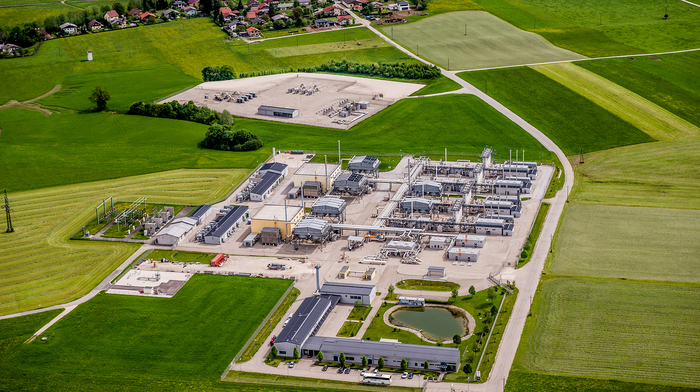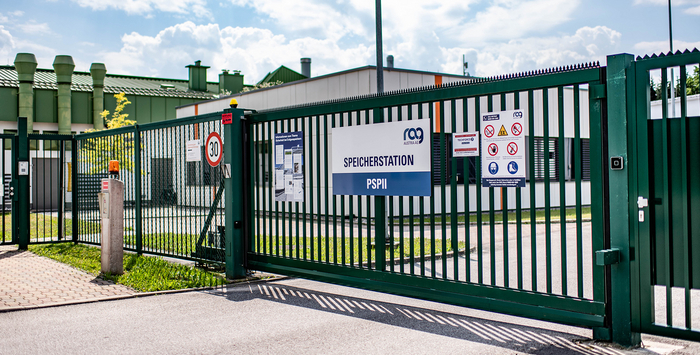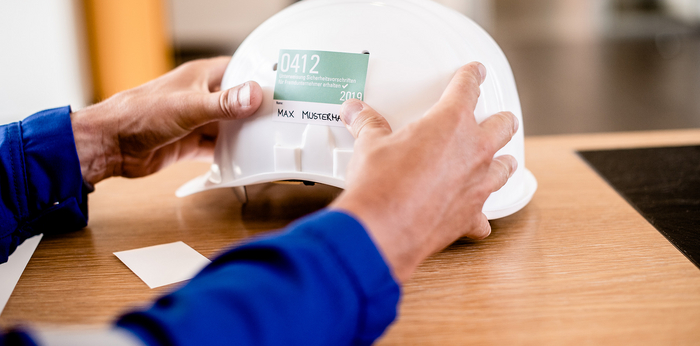
Safety and security are our number one priority, and we are committed to maintaining them whatever the circumstances. RAG Austria AG meets the highest safety standards in order to ensure a safe working and living environment for all of our staff as well as local residents and municipalities. Safe facilities and work processes are paramount, and fundamental to our success as a business.

We secure our facilities by means of early warning systems and by avoiding breakdowns before damage occurs, as well as by reducing identified risks. These include technical breakdowns due to human error, threats to facilities due to climate change (e.g. flood, storm and lightning damage), fire, and sabotage due to criminal actions of third parties. Emergency plans ensure that RAG personnel and the emergency services are able to respond quickly and appropriately in case of a critical incident; by doing so they minimise potential damage and negative impacts on the environment.
Injury to personnel and damage to local communities in relation to critical incidents are addressed in detail in the chapters ‘Occupational health and safety’ and ‘Climate and environmental protection’.

We have implemented various management systems designed to ensure safe operations and secure energy supplies. These interlocking systems cover the following areas:
The HSE management system covers all areas of responsibility relating to health, safety and environmental protection, and forms a binding basis for work in every area of activity. You can find more information about this management system here.
Our integrity management system covers three focus areas: above-ground facilities (facility integrity); gas, oil and storage pipelines (pipeline integrity); and casings and well fittings (well integrity).
We use established risk assessment systems to evaluate facilities’ resilience in the face of disturbing influences and exceptional operating states. For example, steps can be taken to minimise the risk of an outage and to enhance system-recovery capability. These factors are highly significant for RAG in its role as part of Austria and Central Europe’s critical infrastructure, which is also assessed using blackout scenarios.
A high-level integrity manager, who is a member of the Internal Audit & Strategic Security Management (IRS) Department, prepares a central report containing full information from the three focus areas in the integrity management system, and implements corresponding technical projects.
![]() Our storage facilities have to keep functioning, come what may, and be ready to spring into action at any time. This is our day-to-day business, supported by a lot of high tech behind the scenes.
Our storage facilities have to keep functioning, come what may, and be ready to spring into action at any time. This is our day-to-day business, supported by a lot of high tech behind the scenes.

The following departments and functions are responsible for the security of our facilities:
With supply chains that stretch across the globe, the Purchasing Department also plays an important role. This department must source the equipment and materials required for maintenance and servicing of our facilities, and maintain cost-efficient stocks so that we are able to fulfil our contracts with customers and ensure security of supply.
Clear responsibilities and communication channels, e.g. committee meetings and management reviews, are defined in the management systems. The Executive Board reports to the Supervisory Board on HSE activities and integrity matters, on a quarterly basis. Depending on the significance of an incident, public authorities, project partners and owners are informed in accordance with the HSE management system.
In 2021 there were three incidents in which harmful substances were released. In October a plastic pipe ruptured during decommissioning of a pipeline, and a mixture of crude oil and water, estimated at less than five cubic metres in volume, contaminated the surrounding soil. 32 tonnes of contaminated soil was properly disposed of, so that living organisms would not be harmed and the surrounding environment would not be affected (water, soil). In December 2021, a leaking well at a storage facility released approximately 500 cubic metres of methane, and the same quantity of greenhouse gas emissions was released at the surface production facility of a natural gas production site, due to a leaking column. There were no incidents resulting in significant leaks in 2022.